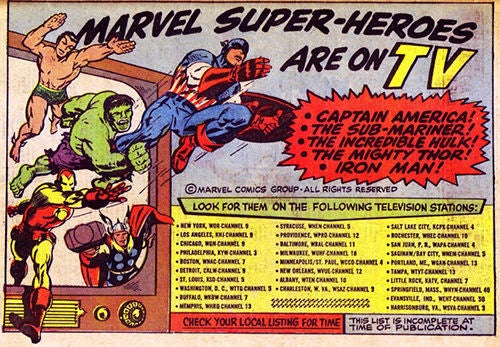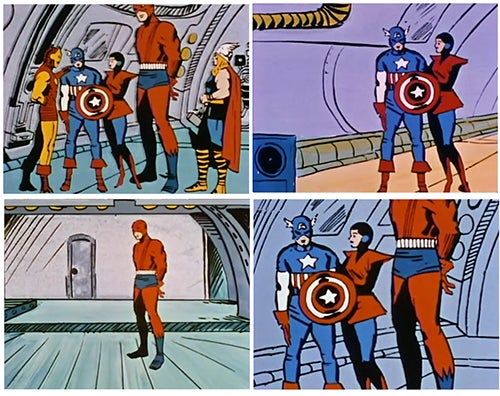 The X-Men… the Avengers… Guardians of the Galaxy… Luke Cage… Captain America… Doctor Strange… Daredevil… Iron Man… Thor… it is truly amazing to me that these characters and their stories are household names, making billions of mainstream dollars across multiple media. Fifty-five years ago, Marvel was an upstart comic company, a skeleton remnant of a WWII company in a field dominated by the “DC” stable of heroes. I can tell you, back then… once you hit high school you did not automatically run around talking about reading comics or talking about the adventures of these characters.
The X-Men… the Avengers… Guardians of the Galaxy… Luke Cage… Captain America… Doctor Strange… Daredevil… Iron Man… Thor… it is truly amazing to me that these characters and their stories are household names, making billions of mainstream dollars across multiple media. Fifty-five years ago, Marvel was an upstart comic company, a skeleton remnant of a WWII company in a field dominated by the “DC” stable of heroes. I can tell you, back then… once you hit high school you did not automatically run around talking about reading comics or talking about the adventures of these characters.
I was that kid. And, as it turns out, there was a growing, albeit silent, cult of Marvel.
In fall 1966, Marvel probably increased its growing market share by presenting five different animated programs that showed every afternoon, in the spot between “after-school” and “dinnertime.” I think they got huge exposure. Thirteen episodes each of Captain America, Thor, Iron Man, Hulk, and Sub-Mariner were accomplished lickety-split by using an animation technique that any child might use today with a scanner, a bit of picture editing software, and a tool for stitching together still frames with an audio track.
And (lest we forget) this was the era of 3-5 VHF broadcast TV stations backed up by a grainy UHF station or two… and no way to record anything unless you had a movie camera pointed at the broadcast. Your choices were see-it-live or miss-it.
The result was rather crude by any standards of animation, even for the time (but it is not worse than South Park, which has always been unwatchable for me).
They (rather brilliantly and efficiently, I would say) used photocopies of the published comics as the source for most of the art, which means that the art staff needed to be able to trace, more than anything else. The basic dialogue was also already written.
By doing this, they also preserved the look of the artwork, and the tone of the stories, from the comics.
In fall 1966, I was about to turn 10 years old, part of the late boomer birth-year demographic that had the absolute highest number of births in the US, in a given year (ever), 1957. I grew up with the standard DC heroes (Superman, Batman…) and these Marvel TV cartoons absolutely introduced me to their stable. And, I can tell you, absolutely inspired me to the comics. Although I cannot say I thought about the significance, I did notice that the stories and drawings on TV matched the look and style of the books, and recall thinking of this positively.

Ten year-olds have finite discretionary income (I think I was getting 50 cents a week allowance), and over the course of 4 weeks that could net you 10-12 comics with change left over for the Marvel bubble gum with the collectable cards inside.
We of a certain age, who grew up with these characters, are probably the ones responsible for moving the heroes into the mainstream. We have certainly been responsible, through our nostalgia, for pushing the price of the original art through the roof – and if you think buying this art is recapturing a piece of one’s youthful memories, I think you would be spot on correct.
Over in the Gallery, I have been posting pages of original comic art that celebrate their fiftieth anniversary of publication, starting with my oldest piece of art from this “Silver Age of Comics” (Hulk #6, p 2, March 1963, posted in March 2013).
Here is a comparison of the fifth episode of the 1966 Captain America cartoon series, where I have taken screen captures and lined them up with the pages from Avengers #4 (1964), which featured the modern era return of the Captain America character.

Avengers 4, page 4 (1963)

Still frames taken from the fifth episode of the 1966 “Captain America” cartoon.

Avengers 4, page 6 (1963)

Still frames taken from the fifth episode of the 1966 “Captain America” cartoon.

More stills from the cartoon, where you can see various edits of the same image.

